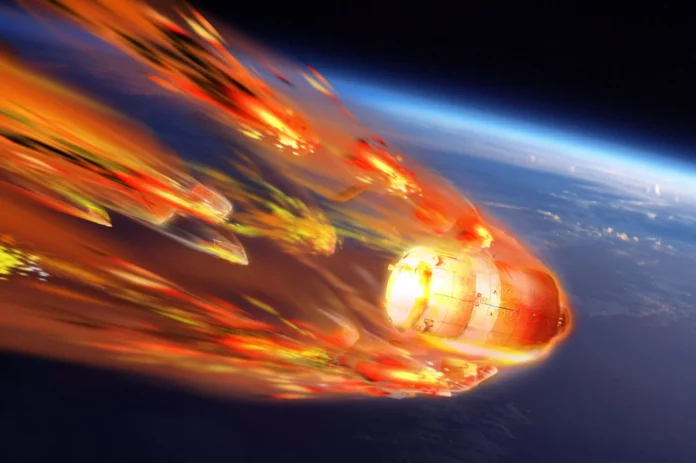The 53-year-old Venus probe, which failed to leave low Earth orbit, is expected to make an uncontrolled re-entry in the coming weeks. Parts of the spacecraft, designed to withstand extreme heat, may survive the descent and fall to Earth.
The landing module of the old Soviet spacecraft is expected to re-enter the Earth’s atmosphere during the second week of May, according to Marco Langbroek, a satellite monitoring specialist based in Leiden, the Netherlands. “As this is a lander that has been designed to survive passage through the atmosphere of Venus, it is quite possible that it will survive re-entry into the Earth’s atmosphere intact,” Langbroek wrote in an update on his blog. “The risks involved are not particularly high, but they are not zero either.”
Cosmos 482 was launched on March 31, 1972 from the Baikonur Cosmodrome in Kazakhstan. The mission was an attempt by the Soviet space program to reach Venus, but the spacecraft failed to gain enough speed to enter the trajectory to the hot planet. The malfunction caused the engine to burn out, which was not enough to reach Venus’ orbit, and left the spacecraft in an elliptical Earth orbit, according to NASA. The spacecraft broke up into four different pieces, with two smaller fragments re-entering the atmosphere over Ashburton, New Zealand, two days after launch. Meanwhile, the two remaining pieces, presumably the payload and a separated upper stage engine block, entered a higher orbit measuring 130 by 6,089 miles (210 by 9,800 kilometers).
The unsuccessful mission consisted of a carrier bus and a lander, which together form a spherical pressure vessel weighing more than 1,000 pounds (495 kilograms). Given its mass, “the risks are similar to those of a meteorite impact,” Langbrook wrote.
It is currently difficult to determine when the spacecraft will re-enter the atmosphere. Langbrook estimates that re-entry will take place on May 10, but a more precise date will become clear as the re-entry date approaches. It is difficult to determine the exact date because the Sun, which is currently in its active phase, is heating and expanding the Earth’s atmosphere; this creates more atmospheric drag for orbiting objects, forcing them to return earlier.
It is also difficult to determine where on Earth the remains of a spacecraft will end up, as it depends on when it re-enters the atmosphere and breaks apart. Generally, the likelihood of spacecraft debris falling on populated areas is low, with a higher probability of falling into a remote part of the ocean. Nevertheless, uncontrolled re-entries pose a small risk that should not be ignored or disregarded.









